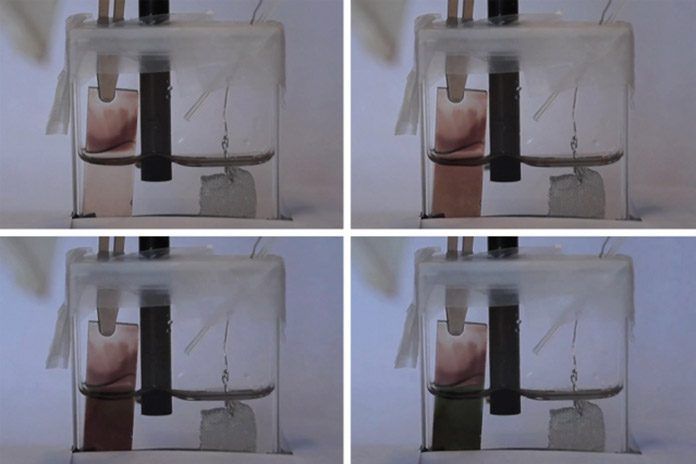MIT scientists have developed a new method making windows that can switch from transparent to dark. They have developed a Self-shading windows. This new system process instantly and have the potential to save energy by blocking sunlight. It can also minimise air conditioning costs. This new method has several advantages including rapid response time and low power requirement.
The system requires less power to maintain new state whenever it switches from clear to dark. It needs electrical charge only when it’s time to switch back again.
This new self-shading window uses electrochromic materials. Electrochromic materials change colour and transparency in response to an applied voltage. But, it is different from photochromic materials. Such materials lead to having slower response times and to undergo a smaller change in their darkness levels. Current electrochromic materials have similar limitations and found only in niche applications.
Dincă says, “The self-shading windows can be darkened by turning on the voltage. But, when you flip the switch, it takes few minutes for the window to turn dark. Obviously, you want that to be faster.” (Mircea Dincă is MIT professor of chemistry.)
It becomes slow because of changes in the material depends on electrons movement. An electric current gives a negative charge to the whole window. Positive ions then move through the material to restore the electrical balance and creates the color changing effect. When electrons flow quickly through the material, ions move slowly and limits the overall reaction speed.
Scientists then use metal organic frameworks to overcome this problem. The metal organic framework can conduct both electrons and ions at very high speeds. For the first time, scientists used a metal organic framework because of its electrical and optical properties.
The self-shading window is actually made by combining two chemical compounds. 1. Organic material, 2. Metal salt. These two chemical compounds are then mixed into a thin film of the switchable material.
Dincă says, “The combination of these two, gives a relatively fast switching time and a nearly black colour. The self-shading windows have the potential, to do much more than just preventing glare. These could lead to pretty significant energy savings. It happens by reducing air conditioning needs in buildings with many windows in hot climates. You could just flip a switch when the sun shines through the window, and turn it dark or even automatically make that whole side of the building go dark all at once.”
Scientists demonstrate that once the switch is flip and the material changes colour, it requires no more power to maintain its new state. No extra power require until the switch is flip to turn the material back to its former state. Whether it may clear or dark.
According to scientists, the self-shading window could be used in low-power displays, electronic ink display.
Omar K. Farha, a research professor of chemistry at Northwestern University, said, “Given this material’s relatively rapid switching time. I see no reason why the next generation Dreamliner can’t use MOFs for its electrochromic windows.”
